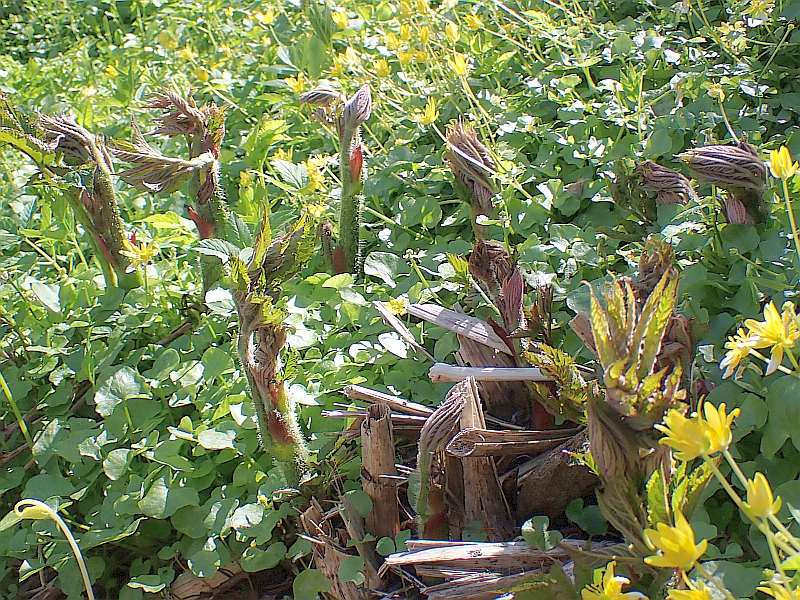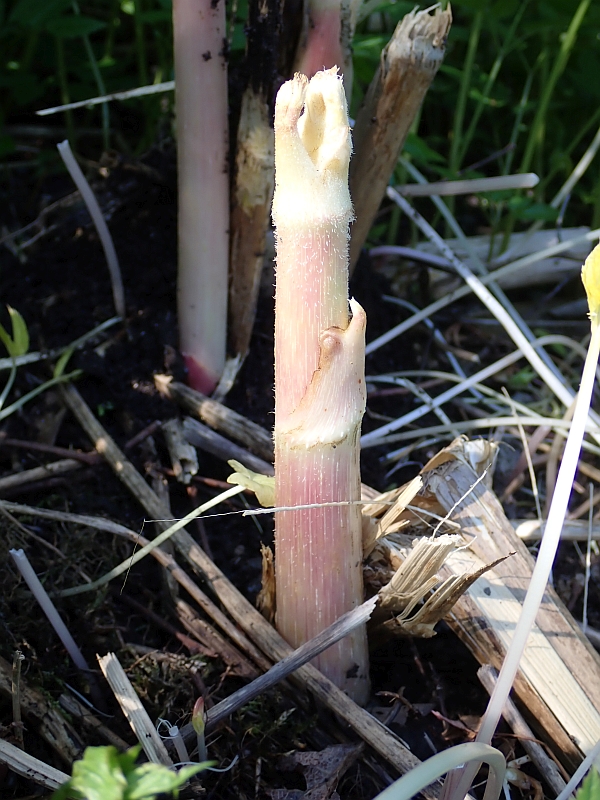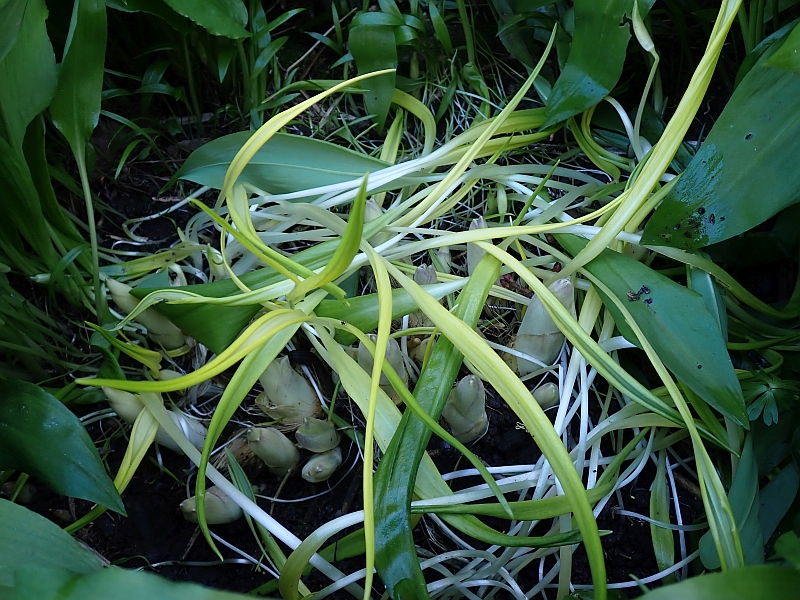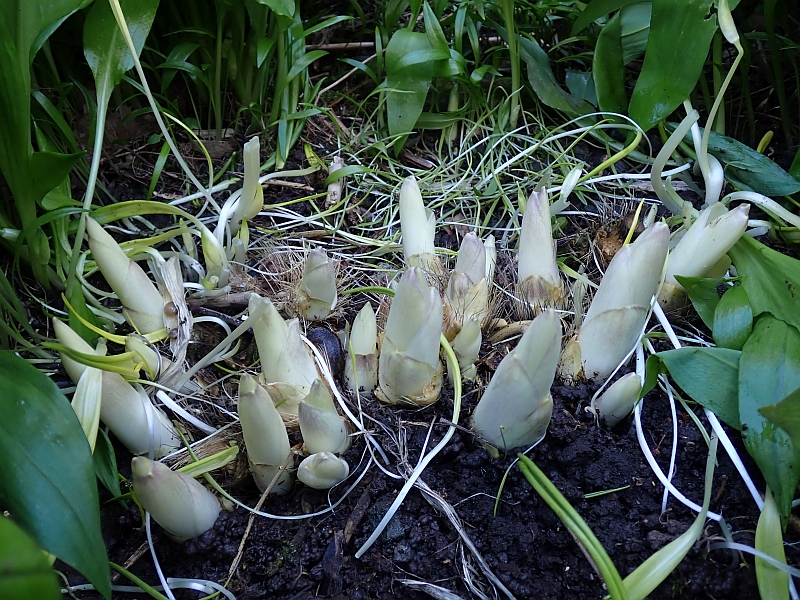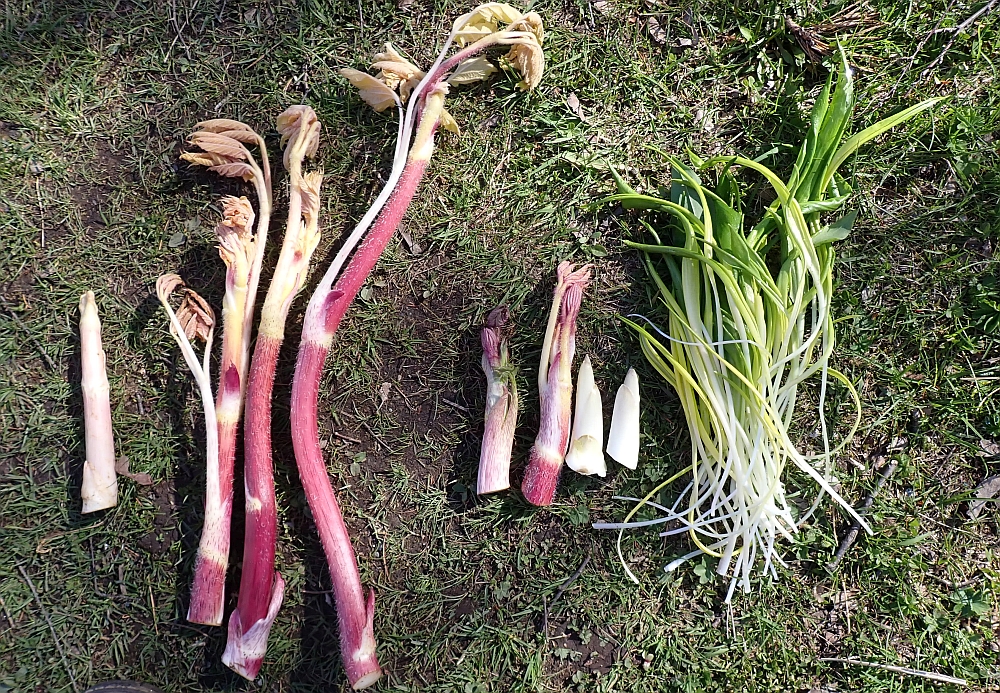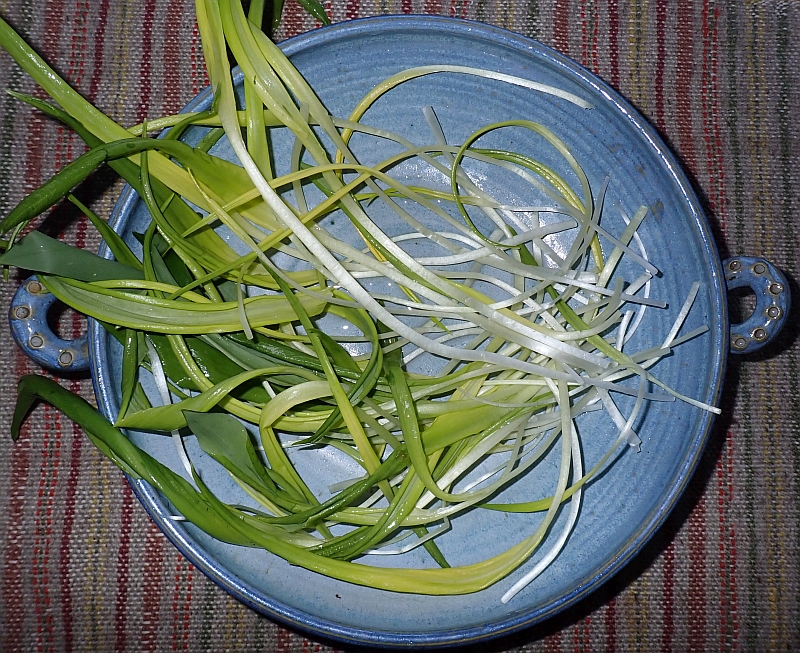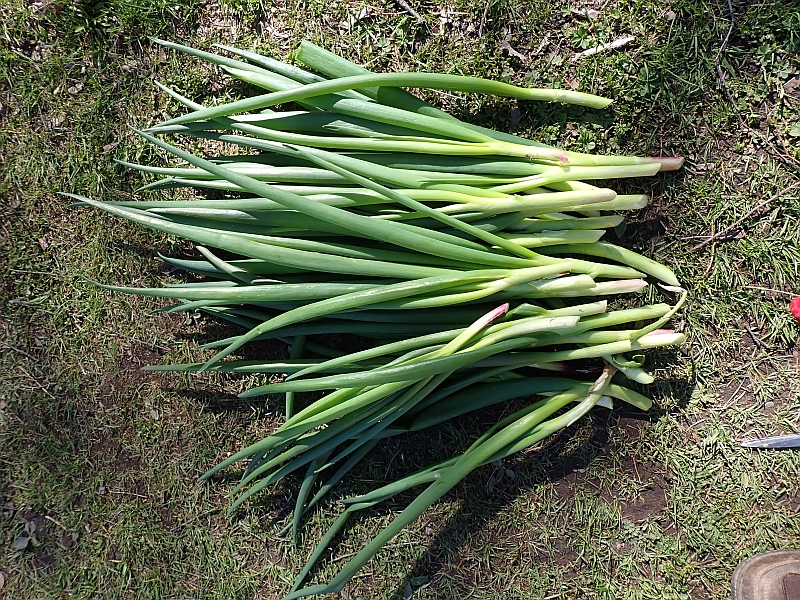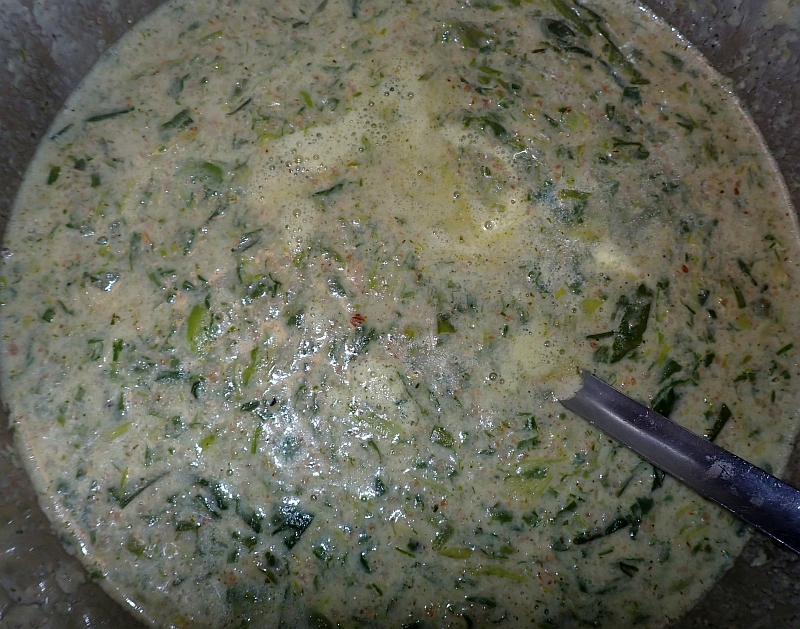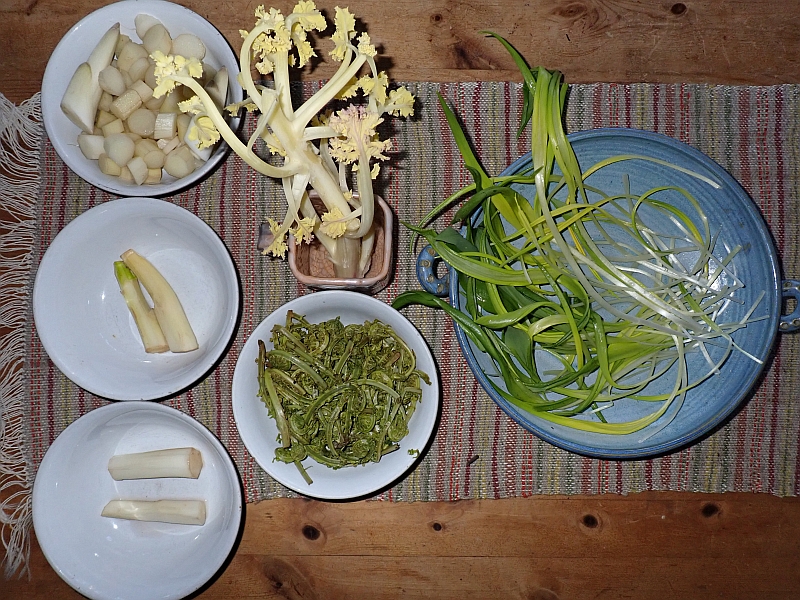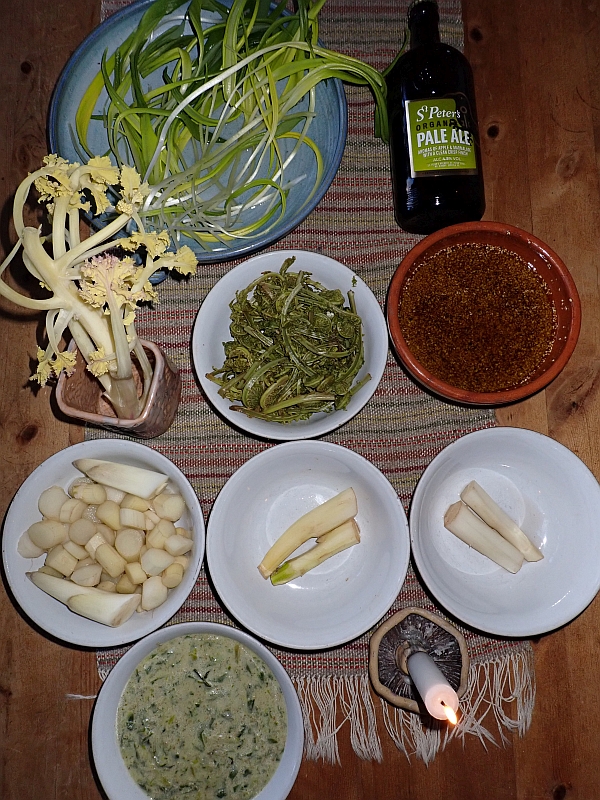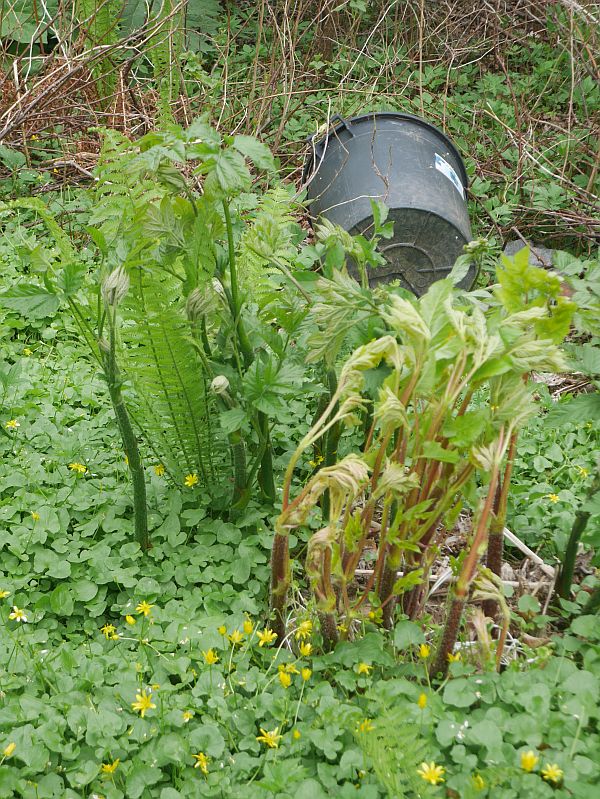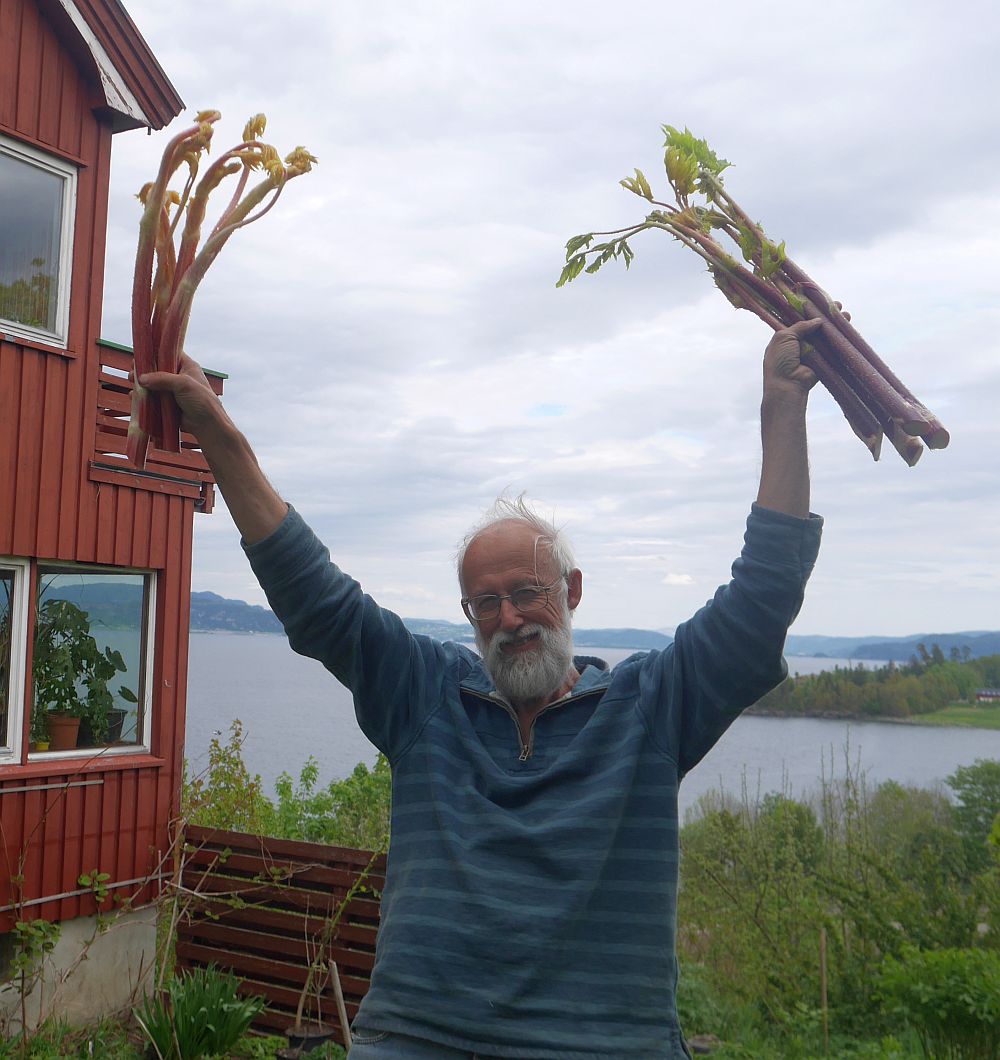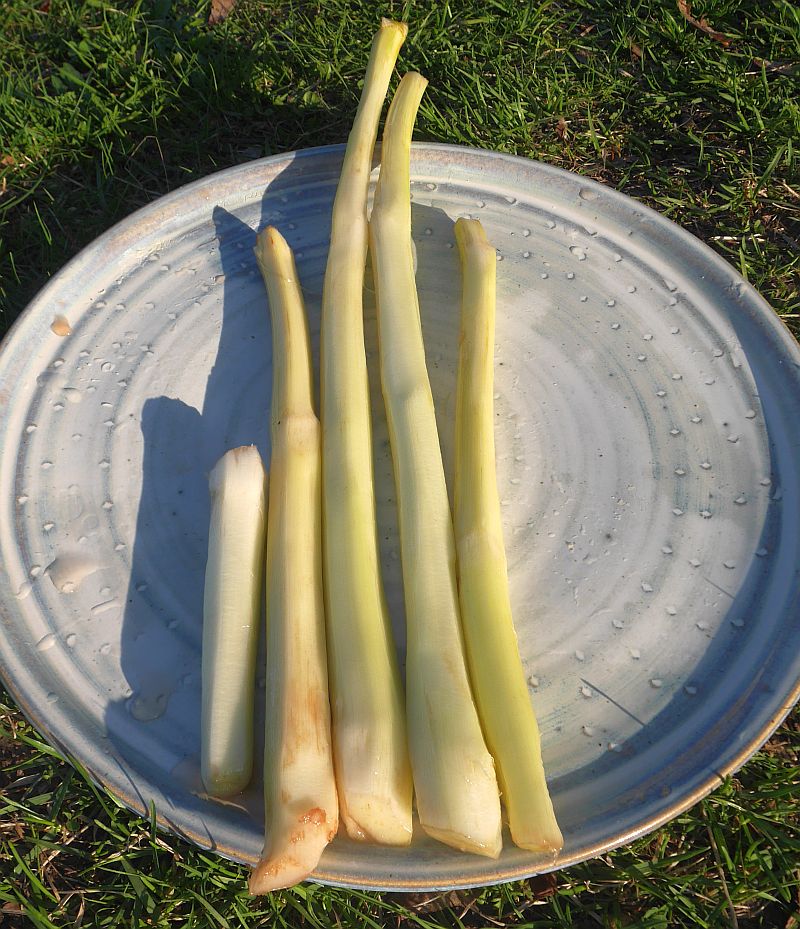The best of spring in one sitting. In celebration of the country Norway, we yesterday (17th May) harvested a small selection of the best blanched perennial vegetables (apart from the ostrich fern which had to be harvested or it would have been too late). This included three udo species (Aralia cordata, Aralia californica and Aralia racemosa), sea kale (Crambe maritima), Hosta “Big Daddy” together with delicious sweet blanched ramsons (Allium ursinum) . They were all eaten raw (apart from the fern which was steamed for 10 minutes) with a Japanese dipping sauce – olive oil (should have been sesame), tamari (soy sauce) and roasted sesame seeds. These accompanied an onion soup prepared with half of the leaves from one plant of Wietses Onion, a vigorous hybrid of Allium pskemense and Allium fistulosum!
It doesn’t get much better than this! More information with the pictures:
Tag Archives: American spikenard
American Spikenard salad
Last night, I tried American spikenard (American Udo) or Aralia racemosa for the first time! Although Aralia cordata (Japanese Udo) had a hint of bitterness after blanching, the spikenard was mild with no bitterness…a bit like cucumber was my guest’s comment 
NB! The spikenard was more thoroughly blanched than the udo, so not a reliable comparison!
NB! The spikenard was more thoroughly blanched than the udo, so not a reliable comparison!

Peeled and sliced American spikenard shoots

As with yesterday’s udo salad, I simply added a dressing of roasted sesame oil, salt and pepper! Delicious!
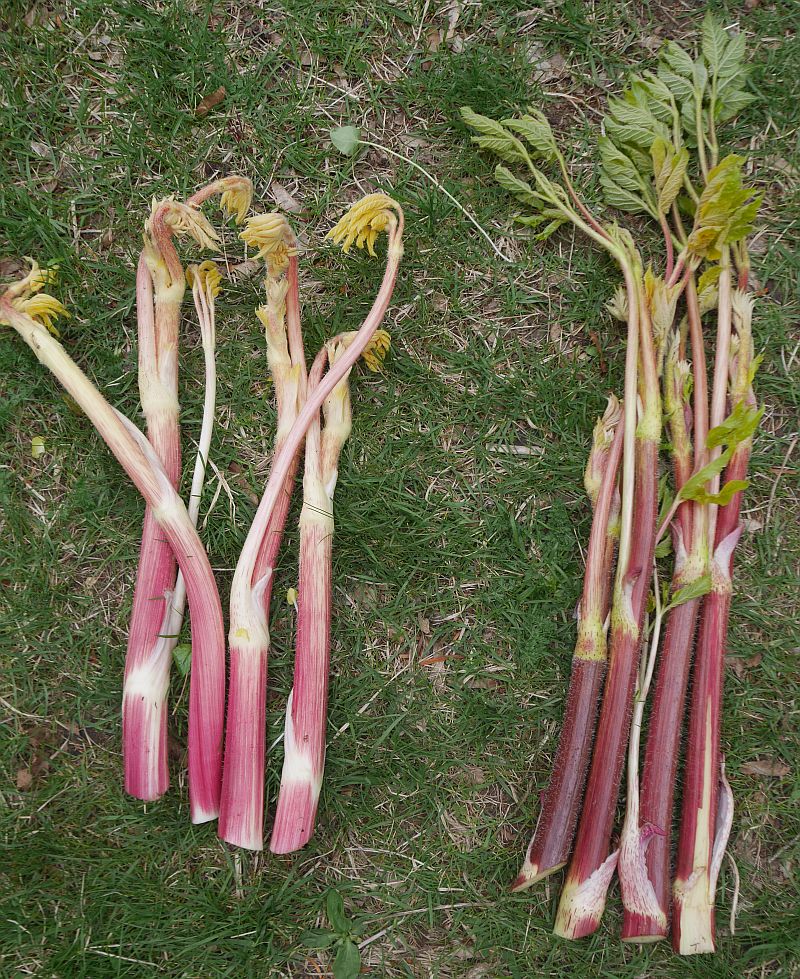
American spikenard to the left and Japanese udo to the right!
Udo salad
Walking past the Udo (Aralia cordata) patch yesterday morning I noticed that the shoots had outgrown their bucket and, as usual, had thrown the bucket down the hill, eager for some sunshine. Sad for it, its effort was in vain as they were bound for the kitchen! Here’s an album of pictures showing how I prepared the udo salad.
I alsø blanced Arali racemosa for the first time, but haven’t tried it yet…
The bucket of cordata let some light in at the top, so the shoots were greener than for A. racemosa



